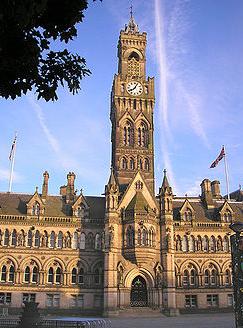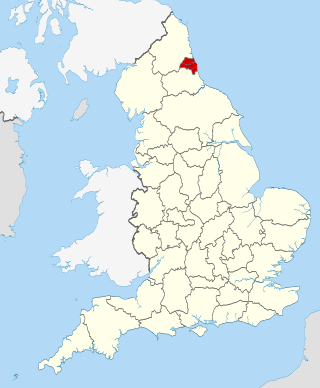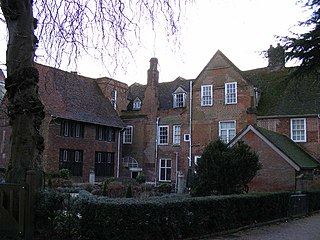Buildings
| Name | Grade | Location | Type | Completed [note 1] | Date designated | Grid ref. [note 2] Geo-coordinates | Entry number [note 3] | Image | Wikidata |
|---|---|---|---|---|---|---|---|---|---|
| 61, Bute Street | II | South | House | c. 1860 | 20 February 1981 | TL0921921462 | 1321364 |  | Q26607276 |
| 64, Bute Street | II | South | House | 1889 | 20 February 1981 | TL0925321468 | 1114607 |  Upload Photo | Q26408392 |
| 66 and 68, Bute Street | II | South | House | c. 1870 | 20 February 1981 | TL0925821474 | 1321365 |  Upload Photo | Q26607277 |
| 111, Butterfield Green Road | II | Stopsley | House | 17th century | 20 February 1981 | TL1067024496 | 1114609 |  Upload Photo | Q26408394 |
| 2-8, Castle Street | II | South | House | mid 19th century | 20 February 1981 | TL0920921083 | 1114613 |  Upload Photo | Q26408398 |
| 5, Castle Street | II | South | House | c. 1870 | 20 February 1981 | TL0923821085 | 1114611 |  Upload Photo | Q26408396 |
| 53, Cheapside | II | South | House | 1882 | 20 February 1981 | TL0925821396 | 1321366 |  Upload Photo | Q26607278 |
| 45-55, Dumfries Street | II | South | House | mid 19th century | 20 February 1981 | TL0883220923 | 1114616 |  Upload Photo | Q26408400 |
| 127 Dunstable Road | II | Biscot | House | 1938 | 11 March 1999 | TL0837521733 | 1356878 |  Upload Photo | Q26639496 |
| 24, East Street | II | Lilley | House | 17th century | 24 October 1988 | TL1186926596 | 1174581 |  Upload Photo | Q26469252 |
| 21, George Street | II | South | House | mid 19th century | 20 February 1981 | TL0920221131 | 1321369 |  Upload Photo | Q26607280 |
| 32, George Street | II | South | House | late 19th century | 20 February 1981 | TL0918221201 | 1321370 |  | Q26607281 |
| 63, George Street | II | South | House | late 19th century | 20 February 1981 | TL0906521227 | 1114619 |  Upload Photo | Q26408403 |
| 1, George Street West | II | South | House | mid 19th century | 20 February 1981 | TL0909521156 | 1114620 |  Upload Photo | Q26408404 |
| 3, George Street West | II | South | House | c. 1860 | 20 February 1981 | TL0908721140 | 1114621 |  Upload Photo | Q26408405 |
| 6, George Street West | II | South | House | early 19th century | 20 February 1981 | TL0905121126 | 1114624 |  Upload Photo | Q26408408 |
| 7 and 9, George Street West | II | South | House | late 19th century | 20 February 1981 | TL0907821124 | 1114622 |  Upload Photo | Q26408406 |
| 8 and 10, George Street West | II | South | House | mid 19th century | 20 February 1981 | TL0903421091 | 1311808 |  Upload Photo | Q26598316 |
| 9A, George Street West | II | South | House | late 19th century | 20 February 1981 | TL0906921108 | 1146428 | 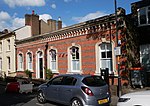 | Q26493453 |
| 11, George Street West | II | South | House | late 19th century | 20 February 1981 | TL0905921089 | 1321372 | 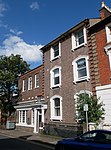 | Q26607283 |
| 13, 15 and 17, George Street West | II | South | House | mid 19th century | 20 February 1981 | TL0905421082 | 1114623 |  | Q26408407 |
| 19, George Street West | II | South | House | late 19th century | 20 February 1981 | TL0904721068 | 1146440 | 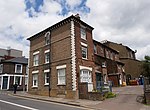 | Q26493464 |
| 40, Guildford Street | II | South | House | 1905 | 20 February 1981 | TL0919221483 | 1321373 |  | Q26607284 |
| 40A, Guildford Street | II | South | House | late 19th century | 20 February 1981 | TL0920321475 | 1114625 |  | Q26408409 |
| 47, Guildford Street | II | South | House | c. 1860 | 20 February 1981 | TL0924321430 | 1321374 |  | Q26607285 |
| 50, Guildford Street | II | South | House | c. 1900 | 20 February 1981 | TL0913421530 | 1311811 |  Upload Photo | Q26598319 |
| 70-76, Hastings Street | II | South | House | mid 19th century | 20 February 1981 | TL0886420880 | 1146474 |  Upload Photo | Q26493495 |
| 23-27, King Street | II | South | House | c. 1860 | 20 February 1981 | TL0904621162 | 1321376 |  Upload Photo | Q26607287 |
| 29-37, King Street | II | South | House | c. 1860 | 20 February 1981 | TL0903921155 | 1311763 |  Upload Photo | Q26598269 |
| 39, King Street | II | South | House | c. 1860 | 20 February 1981 | TL0902221132 | 1114629 |  Upload Photo | Q26408413 |
| 7, New Bedford Road | II | South | House | ? | 20 February 1981 | TL0893421502 | 1114631 |  Upload Photo | Q26408415 |
| 16, Park Street | II | South | House | c. 1740 | 8 January 1979 | TL0934821108 | 1311755 |  Upload Photo | Q26598259 |
| 101, Park Street | II | South | House | c. 1840 | 2 April 1980 | TL0963220907 | 1114634 |  Upload Photo | Q26408418 |
| 11 and 13, Park Street West | II | South | House | c. 1860 | 20 February 1981 | TL0935621044 | 1114635 |  Upload Photo | Q26408419 |
| 21 and 23, Park Street West | II | South | House | c. 1860 | 20 February 1981 | TL0935221028 | 1157938 |  Upload Photo | Q26451678 |
| 27 and 29, Park Street West | II | South | House | c. 1860 | 20 February 1981 | TL0933621005 | 1321377 |  Upload Photo | Q26607288 |
| 79-80, The Green | II | Cockernhoe, Offley | House | 17th century | 24 October 1988 | TL1276023632 | 1103204 |  Upload Photo | Q26397267 |
| 93, Wellington Street | II | South | House | late 19th century | 20 February 1981 | TL0885821002 | 1321342 |  Upload Photo | Q26607259 |
| 41 42 44 45, West Street | II | Lilley | House | 17th century | 24 October 1988 | TL1183426444 | 1347079 |  Upload Photo | Q26630558 |
| 55, West Street | II | Lilley | House | late 15th century | 20 February 1981 | TL1196826220 | 1103201 |  Upload Photo | Q26397263 |
| Bailey Hill Water Tower | II | South | Water tower | 20 February 1981 | TL0920120067 | 1321343 |  Upload Photo | Q26607260 | |
| Baptist Union Church | II | South | Church | 10 September 1954 | TL0920220891 | 1114612 | 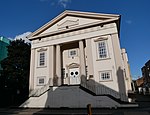 | Q26408397 | |
| Barn at Entrance to Mangrove Hall Farm | II | Mangrove Green, Offley | Outbuilding | 24 October 1988 | TL1238924070 | 1103215 |  Upload Photo | Q26397279 | |
| Bury Park United Reformed Church, Luton | II | Biscot | Church | 20 February 1981 | TL0839821896 | 1114638 |  Upload Photo | Q26408422 | |
| Caddington War Memorial | II | Caddington | Monument | 18 October 2016 | TL0648019874 | 1438671 |  Upload Photo | Q66478009 | |
| Cassels Cottage | II | Cockernhoe, Offley | Cottage | 14 January 1977 | TL1245223555 | 1175118 |  Upload Photo | Q26469765 | |
| Central Block of St Marys Hospital | II | Dallow | Hospital | 20 February 1981 | TL0859821435 | 1114617 |  Upload Photo | Q26408401 | |
| Ceylon Baptist Church and Hall | II | South | Church | 31 January 1980 | TL0890821059 | 1114641 |  | Q26408425 | |
| Chaul End Farmhouse | II | Chaul End, Caddington | Farmhouse | 26 September 1980 | TL0558221597 | 1321350 |  Upload Photo | Q26607265 | |
| Chiltern Green Farmhouse | II | Chiltern Green, Hyde | Farmhouse | 26 September 1980 | TL1357219425 | 1114711 |  Upload Photo | Q26408491 | |
| Christ Church | II | South | Church | 20 February 1981 | TL0879621333 | 1114637 |  Upload Photo | Q26408421 | |
| Church Cottage | II | Lilley | House | 24 October 1988 | TL1183626417 | 1103203 |  Upload Photo | Q26397265 | |
| Church Farmhouse | II | Lilley | Church | 24 October 1988 | TL1188826401 | 1103200 |  Upload Photo | Q26397262 | |
| Church of All Saints | II* | Caddington | Church | 3 February 1967 | TL0639819847 | 1321349 | 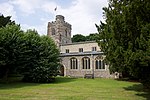 | Q17551321 | |
| Church of St Andrew with attached walls to south east | II | Biscot | Church | 19 March 1981 | TL0828222752 | 1200358 |  Upload Photo | Q26496163 | |
| Church of St Christopher | II | Round Green | Church | 27 August 1998 | TL1004322744 | 1376192 |  Upload Photo | Q26656822 | |
| Church of St Luke | II | Leagrave | Church | 25 September 1998 | TL0565623705 | 1376618 |  Upload Photo | Q26657156 | |
| Church of St Matthew | II | High Town | Church | 20 February 1981 | TL0938021979 | 1114643 |  | Q26408427 | |
| Church of St Peter | II* | Lilley | Church | 27 May 1968 | TL1183226370 | 1174639 | 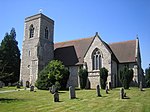 | Q17554859 | |
| Copperhill | II | Lilley | House | 24 October 1988 | TL1186226619 | 1103236 |  Upload Photo | Q26397300 | |
| Crouchmoor Farmhouse | II | Tea Green, Offley | Farmhouse | 24 October 1988 | TL1349122864 | 1347106 |  Upload Photo | Q26630580 | |
| Dog Kennel Farmhouse | II | Lilley Bottom | Farmhouse | 24 October 1988 | TL1216125905 | 1103212 |  Upload Photo | Q26397276 | |
| Dovecote at Home Farm to south of house | II | Offley | House | 24 October 1988 | TL1178224398 | 1103177 |  Upload Photo | Q26397239 | |
| Ebenezer Chapel | II | South | Church | 20 February 1981 | TL0887020909 | 1114626 |  Upload Photo | Q26408410 | |
| Entrance Gate and Outbuildings to Wardown Park House | II | Wardown Park, High Town | Outbuilding | 20 February 1981 | TL0894123014 | 1114639 |  Upload Photo | Q26408423 | |
| Former Chapel Langley School | II | Farley | Church | 20 February 1981 | TL0889920715 | 1114636 |  | Q26408420 | |
| Former Stables, walls of adjoining Walled Garden and Vaulted Alcove at Putteridge Bury | II | Putteridge Bury Estate, Putteridge | Outbuilding | 24 October 1988 | TL1182224772 | 1103207 |  Upload Photo | Q26397270 | |
| Garden Houses and retaining walls to terraced gardens at Luton Hoo | I | Luton Hoo Estate, Hyde | Outbuilding | 26 September 1980 | TL1047618446 | 1158944 |  Upload Photo | Q17528320 | |
| Gas Lamps outside numbers 10 and 32 Hart Hill Drive | II | Hart Hill, High Town | Lampposts | 23 March 2011 | TL0991621489 | 1116880 | 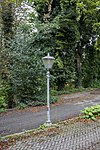 Hart Hill Drive | Q26410458 | |
| Gates, Dwarf Wall and Railings to High Town Methodist Church | II | High Town | Wall/railing | 20 February 1981 | TL0936621833 | 1146501 |  to High Town Methodist Church | Q26493519 | |
| George II Public House | II | South | Pub | 20 February 1981 | TL0927221478 | 1114608 |  Upload Photo | Q26408393 | |
| Glasshouses at Stockwood Park | II | Farley | 1 September 2020 | 1468978 | 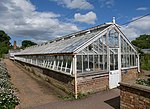 | Q98931429 | |||
| Great Northern Public House | II | South | Pub | 20 February 1981 | TL0922421472 | 1114606 |  Upload Photo | Q26408391 | |
| Hart Lane Water Tower | II | Hart Hill, Crawley | Water tower | 20 February 1981 | TL1005422080 | 1146452 | 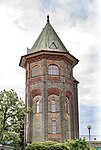 | Q26493474 | |
| High Town Methodist Church | II | High Town | Church | 20 February 1981 | TL0935421844 | 1114627 |  | Q26408411 | |
| High Town Methodist Church Hall | II | High Town | Church | 20 February 1981 | TL0936521857 | 1114628 | 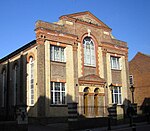 | Q26408412 | |
| Holy Trinity Church | II | Limbury | Church | 27 August 1998 | TL0759823855 | 1376191 |  Upload Photo | Q26656821 | |
| Home Farm No. 1, 2, 3, 4 and Outhouses linked to the North | II | Offley | Farmhouse | 24 October 1988 | TL1174624452 | 1103176 |  Upload Photo | Q26397238 | |
| Horseshoe Cottage | II | Lilley | Cottage | 24 October 1988 | TL1192526302 | 1347078 |  Upload Photo | Q26630557 | |
| Laburnam Cottage | II | Lilley | Cottage | 20 August 1975 | TL1172226582 | 1103199 |  Upload Photo | Q26397261 | |
| Laburnum Farmhouse | II | Hyde | Farmhouse | 26 September 1980 | TL1355319206 | 1321300 |  Upload Photo | Q26607221 | |
| Lilley Arms Public House | II | Lilley | Pub | 24 October 1988 | TL1179026483 | 1103202 |  Upload Photo | Q26397264 | |
| Little Bramingham Farmhouse | II | Bramingham | Farmhouse | 16 May 1978 | TL0727925460 | 1114605 |  Upload Photo | Q26408390 | |
| Lodge to Wardown Park | II | Wardown Park, High Town | Outbuilding | 20 February 1981 | TL0875822912 | 1157879 |  Upload Photo | Q26451620 | |
| Luton Hoo | I | Luton Hoo Estate, Hyde | Mansion | 29 April 1952 | TL1045118552 | 1321301 |  | Q3267914 | |
| Luton Hoo Garden Centre | II | Luton Hoo Estate, Hyde | Outbuilding | 26 October 1980 | TL1029117935 | 1159027 |  Upload Photo | Q26452759 | |
| Luton Hoo Stables, including frontage range and rear courtyard buildings, incorporating Stable Master's house | II* | Luton Hoo Estate, Hyde | Outbuilding | 3 February 1967 | TL1046018212 | 1114713 |  Upload Photo | Q17551105 | |
| Luton Town Hall | II | South | Town hall | 27 August 1998 | TL0900621329 | 1376193 |  | Q6705894 | |
| Mangrove Hall and Attached Outhouses | II | Mangrove Green, Offley | Outbuilding | 24 October 1988 | TL1240724095 | 1175103 |  Upload Photo | Q26469748 | |
| Moat House | II | Saints | House | 10 September 1954 | TL0780624022 | 1311772 |  Upload Photo | Q26598279 | |
| Monument In St Peter's Churchyard (8m to south of Church Tower) | II | Lilley | Monument | 24 October 1988 | TL1182126344 | 1347080 |  Upload Photo | Q26630559 | |
| Monument In St Peter's Churchyard (9m to south of Church Tower) | II | Lilley | Monument | 24 October 1988 | TL1182226342 | 1174690 |  Upload Photo | Q26469357 | |
| Office Block, Vauxhall Motors | II | Crawley | Office block | 26 July 1989 | TL1067520657 | 1249000 |  Upload Photo | Q26541173 | |
| Old Post Office Cottages | II | Lilley | Cottage | 24 October 1988 | TL1182526692 | 1174574 |  Upload Photo | Q26469246 | |
| Parish Church of St Mary | I | South | Church | 10 September 1954 | TL0953221204 | 1114615 |  | Q7594376 | |
| Putteridge Bury (Luton College of Higher Education) | II | Putteridge Bury Estate, Putteridge | Mansion | 24 October 1988 | TL1196424780 | 1347083 |  (Luton College of Higher Education) | Q7262469 | |
| Quadrant Walls, Curtain Walls and Gate Piers to Wardown Park Lodge | II | Wardown Park, High Town | Wall/railing | 20 February 1981 | TL0875722889 | 1114632 |  Upload Photo | Q26408416 | |
| Railings at Number 3 | II | South | Wall/railing | 20 February 1981 | TL0907921141 | 1321371 |  Upload Photo | Q26607282 | |
| Railings Fronting Ceylon Baptist Church | II | South | Wall/railing | 31 January 1980 | TL0888521070 | 1321341 |  Upload Photo | Q26607258 | |
| Railings Fronting Hall of Ceylon Baptist Church | II | South | Wall/railing | 31 January 1980 | TL0890521044 | 1114642 |  Upload Photo | Q26408426 | |
| Railings to front and side of Ebenezer Chapel | II | South | Wall/railing | 20 February 1981 | TL0888420912 | 1321375 |  Upload Photo | Q26607286 | |
| Red Lion Hotel | II | South | Hotel | 20 February 1981 | TL0921621086 | 1138335 |  Upload Photo | Q26431530 | |
| South and east Ranges of Farm Buildings at Home Farm | II | Offley | Outbuilding | 24 October 1988 | TL1179524464 | 1103178 |  Upload Photo | Q26397240 | |
| St Hughs Cottage | II | Cockernhoe, Offley | Cottage | 24 October 1988 | TL1260223554 | 1174701 |  Upload Photo | Q26469368 | |
| Stockwood Park House Stable Block | II | Farley | Outbuilding | 29 October 1974 | TL0855119663 | 1321378 |  | Q26607289 | |
| Stone Tank in front of south Front at Putteridge Bury | II | Putteridge Bury Estate, Putteridge | Outbuilding | 24 October 1988 | TL1197924734 | 1174763 |  Upload Photo | Q26469429 | |
| Summerhouse at Wardown Park | II | Wardown Park, High Town | Outbuilding | 20 February 1981 | TL0900122954 | 1321340 |  Upload Photo | Q26607257 | |
| The Brewery Tap Public House, The Pioneer Bookshop | II | South | Pub | 8 January 1979 | TL0937721092 | 1114633 |  Upload Photo | Q26408417 | |
| The Cock Public House | II | South | Pub | 8 January 1979 | TL0941321067 | 1157932 |  Upload Photo | Q26451672 | |
| The Fountain Public House | II | Farley | Pub | 20 February 1981 | TL0878520856 | 1114640 |  Upload Photo | Q26408424 | |
| The Griffin Public House | II | South | Pub | 20 February 1981 | TL0916321089 | 1114614 |  Upload Photo | Q26408399 | |
| The Nickel Bag Public House | II | South | Pub | 20 February 1981 | TL0924321094 | 1114618 |  | Q26408402 | |
| The Painters Arms | II | High Town | Pub | 30 October 1998 | TL0944121931 | 1386059 | 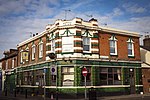 | Q18161081 | |
| The White Hart Public House | II | South | Pub | 20 February 1981 | TL0927621122 | 1114610 |  Upload Photo | Q26408395 | |
| Wandon End Farmhouse | II | Wandon End, King's Walden | Farmhouse | 8 February 1988 | TL1331822443 | 1102448 |  Upload Photo | Q26396515 | |
| Wandon End House | II | Wandon End, King's Walden | House | 8 February 1988 | TL1354822416 | 1307874 |  Upload Photo | Q26594523 | |
| War Memorial | II | South | Monument | 9 March 1982 | TL0902221314 | 1114644 |  | Q26408428 | |
| Wardown Park House | II | Wardown Park, High Town | Mansion | 20 February 1981 | TL0892722970 | 1321379 | 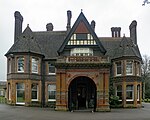 | Q7969194 | |
| Whitehill | II | South | House | 15 October 1997 | TL0896620404 | 1114630 |  Upload Photo | Q26408414 | |
| Wigmore Hall Farmhouse | II | Wigmore | Farmhouse | 20 February 1981 | TL1249922250 | 1321368 |  Upload Photo | Q26607279 | |
| Winchhill Farmhouse | II | Winch Hill, King's Walden | Farmhouse | 8 February 1988 | TL1375521839 | 1307881 |  Upload Photo | Q26594530 |


